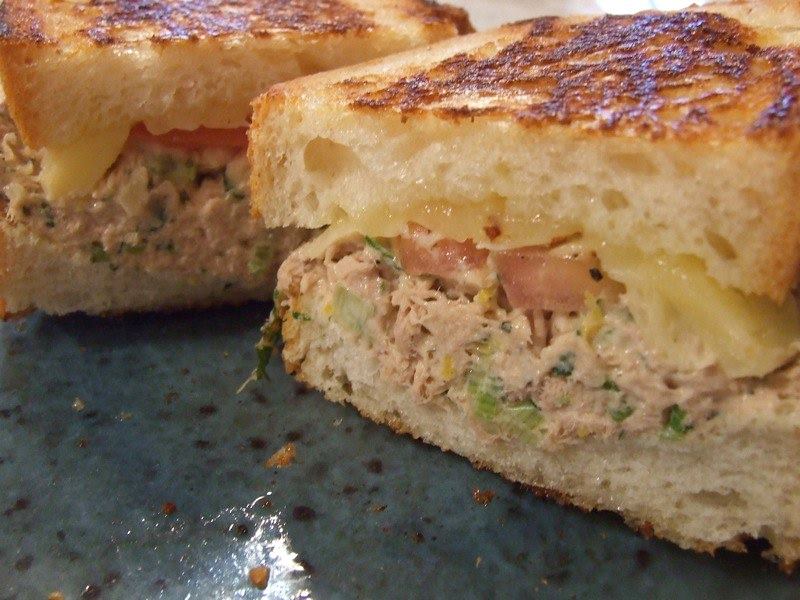
Tuna melt
A classic kid-friendly diner meal
This open faced sandwich features heart-healthy tuna toasted with tomatoes and cheese. It's on the table in 15 minutes, perfect with a side of soup, salad, or oven fries!
Ingredients
- 2 170 g cans of tuna
- 3 tablespoons mayonnaise
- 1/3 cup onion, diced
- pinch of pepper
- pinch of garlic powder
- 4 slices bread, or 2 hamburger buns cut in half
- A few tablespoons of butter or margarine
- 4 slices tomato
- 1/2 cup cheese, grated
Directions
- Preheat oven to 400F
- Drain canned tuna and dice onions. Add both to medium bowl with mayonnaise and seasonings. Stir to combine.
- Butter bread (or hamburger bun halves), and lay out on baking sheet. Top each slice with the tuna mixture, making sure to spread it all the way to the edges of the bread. Add one slice of tomato to each slice.
- Bake for 5 minutes. While the sandwiches are baking, grate cheese.
- Take baking sheet out of the oven, and sprinkle cheese over each sandwich. Return to oven, and bake until cheese is melted and bread is toasted, another 5 minutes or so.
Tips
- You could also make a tuna melt in a pan like a grilled cheese sandwich. Just assemble the sandwich between two slices of bread, and cook in a hot pan with butter until cheese is melted.
- Put two tuna melts together to make one sandwich, or eat open faced.
Variations
- The tuna salad mixture can be made with celery, Dijon mustard, parsley, dill pickles, red pepper flakes or lemon juice, depending on your preference.
Storage
- Tuna salad mix can be made in advance, and kept in a sealed container in the fridge for 3-4 days.
Recipe adapted from the Food Bank of Waterloo Region

